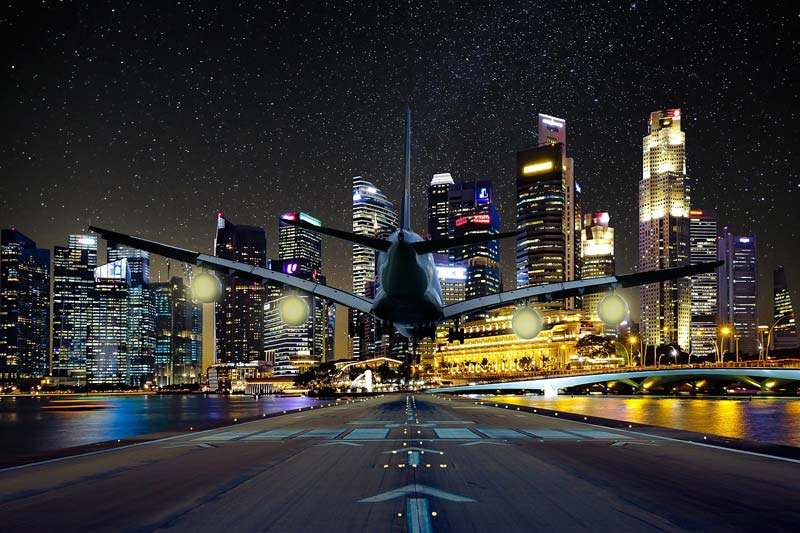
"Last Chance! Get Upgraded on your Ethiopian Airlines flight!" the subject heading read.
"There's only a short time left to get you upgraded!" said the body of the text. "Not every flight qualifies for this new option, but fortunately for you, your upcoming flight is eligible!"
I could understand the enthusiasm. The airline was inviting me, a simple coach traveler, to bid on a business-class seat. If I played the game right, I could end up floating over three continents plus an ocean in the cushy Cloud Nine cabin. For this privilege, I didn't have to tally up loyalty points or grovel in my Sunday finest; I just had to submit a dollar amount and wait for the airline to accept or deny my offer. I typed in three little numbers and crossed my fingers.
"There is no downside to doing it," said Christine Sarkis, deputy executive editor at SmarterTravel.com, who has bid on several international flights. "It adds an element of excitement and hope to the part of your trip that you are least looking forward to."
Ethiopian Airlines is one of many airlines offering travelers the chance to upgrade through a blind auction. (Other participants include Lufthansa, Cathay Pacific, Virgin Australia, Singapore Airlines, China Airlines and Saudi Arabian Airlines.) The process is similar to eBay: On qualifying flights, the airline will set a minimum amount for each leg of your trip.
To help you make an educated guess, the carrier provides a pricing meter ranging from "poor" to "excellent." You can submit a bid at the time of booking or later, through an email invitation from the airline. You can change or cancel the figure within a fat whisker of your scheduled departure. On Ethiopian Airlines, for example, I could adjust my bid up to 50 hours before takeoff. Then you wait. If the airline rejects the amount, it will not charge you for trying. If it accepts the price, it will add the new charges to your economy fare. At the airport, you will receive a new ticket, and you are free to celebrate your elite status in the VIP lounge.
"You have to be willing to spend the money," Sarkis said, "but it is likely to be far less than if you had booked business class."
Sarkis is an avid bidder, with mixed results. She scored a business-class seat on a Scandinavian Airlines flight to Gothenburg, Sweden, with the winning amount of $300, and on a Norwegian Air trip to Rome ($500 to $600). She was less fortunate with Air Canada and Lufthansa, which declined her amounts. However, her less successful attempts did not squelch her optimism or willingness to jump back on the bidding wagon.
"It gives me hope that maybe I don't have to dread this flight," she said.
To improve your odds, Sarkis shared a few tips. First, look for flights that might be desperate for your money, such as routes that are more popular with budget-conscious leisure travelers than expense-account business travelers. The airlines will want to fill those empty premium seats, even for a couple hundred dollars. Consider flying during off-peak times of the day or year, and on shorter routes and larger planes. Before you commit, check the occupancy rate of your flight on ExpertFlyer. If the plane is a ghost town, bid lower; if it's packed, go higher.
"You want to get a sense of availability and how competitive it is," she said.
Sarkis said many people submit the minimum amount, which she attributes to the "I have nothing to lose" mentality. To gain an advantage over these folks, bid 20 to 40 percent higher than the lowest figure. "That's the sweet spot," she said. Also, don't get carried away with bidding: If the airline accepts your requests for all two or four legs of your trip, you could end up paying thousands of dollars in upgrades. Before raising the paddle, think about when you will have the strength for coach and when you will require coddling in a premium class.
Take my Ethiopian Airlines flight to Malawi, for example. I paid $1,350 for the round-trip economy fare, about $4,300 less than business class. All four routes - Dulles to Addis Ababa, Ethiopia, and Addis to Lilongwe, Malawi, and both returns - qualified for an upgrade. The airline set the range at $1,330 to $2,220 for the long haul and $280 to $700 for the shorter portion. Though I preferred to fly in style on the D.C. route, I could not justify the cost. However, I could afford to bid on the Addis-to-Lilongwe section. After 13 hours in coach, I relished the thought of extra elbow and leg room and a multicourse meal served on proper dishware, not a tipsy TV dinner tray.
I decided on $340, which fell in the low "fair" category. Meanwhile, in Arlington, Virginia, my travel companion, Lisa, had selected $1,300 and $275, respectively. A few days later, we learned that the airline had rejected her bid for the transatlantic flight but accepted both of our amounts for the Africa leg. (Monday morning quarterbacking: Did I offer too much?) To squeeze the most out of my money, I stuffed my face with injera firfir at the Cloud Nine lounge in Addis, stuck two large bottles of water in my carry-on bag and pushed the reclining seat settings to the limit.
Toward the end of our vacation, I received the exclamation-point-riddled email again. This time, I bowed out of bidding, but Lisa upped her number to $2,000. From the depths of coach, I wished her a safe and pampered passage.


 Contact The Editor
Contact The Editor
 Articles By This Author
Articles By This Author